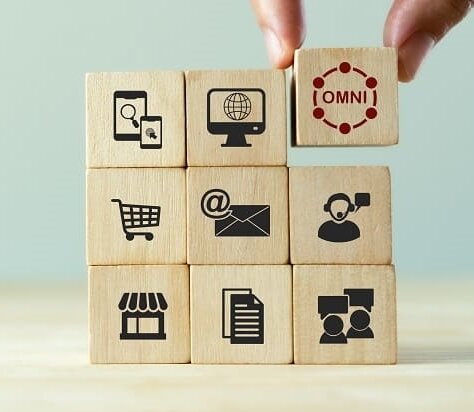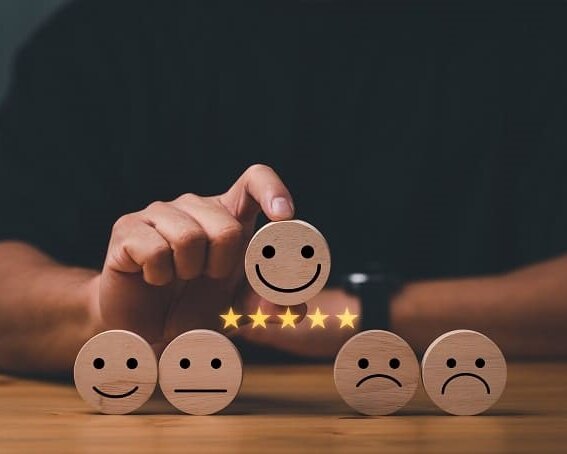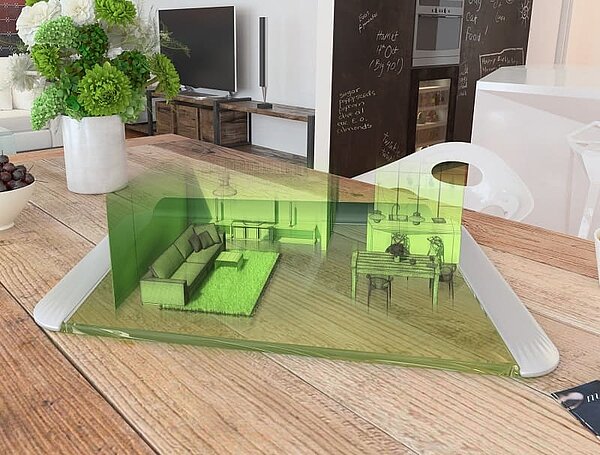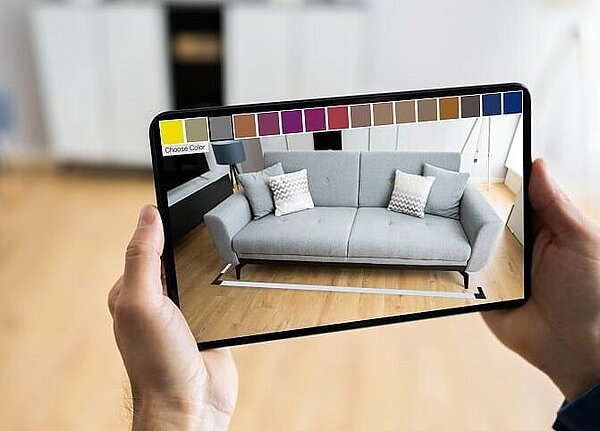Augmented Reality instead of omnichannel?
One channel to bundle them all ... Omnichannel marketing, i.e. the merging of all sales channels into one, is one of the most popular buzzwords of current marketing guides. Omnichannel has also long since found its way into our everyday lives; the majority of large companies such as Apple, Ikea, Mediamarkt and Tchibo have long since gone down this path. For SMEs, however, the complex and cost-intensive conversion, which usually only pays off in the medium or long term, represents a major challenge. Is augmented reality perhaps the better solution after all?
Is my online store omni?
Most likely not - because anyone who operates an omnichannel has usually invested considerable effort in it and knows it. The following conceptual division has become established:

- If you operate a retail store OR an online store, you have a single-channel sales channel; the customer has exactly one option.
- If you operate a retail store AND an online store, this is called multi-channel; the customer can use one or the other, but the channels run largely in parallel.
- If there is a connection between the channels, it is called cross-channel; the customer can order online and pick it up in the retail store, for example.
- Omnichannel now takes this to the extreme: all channels, whether app, social media, online store, brick-and-mortar retail or print products, not only appear uniformly and offer roughly the same services, the customer can also move freely between them. For example, they may have come to the website via a recommendation on social media, then go to the retail store to get an idea of the product, make the purchase at home using the app, and receive delivery.
So far, so practical for the discerning customer - and the assumption that such services are becoming more and more a prerequisite, i.e. that companies will have to increase their omnichannel capabilities for reasons of competitiveness alone, is probably not unfounded. But companies also have clear advantages over and above this from managing their sales channels centrally.
Omnichannel customers, studies show, are the most loyal and profitable customers in retail. This is due both to the improved, customer-friendly services, but will also be due to the tailored offers that companies can make to their omnichannel customers. Customers value personalized recommendations as well as advertising: A consumer survey by IDC and RichRelevance found that, on the one hand, product recommendations and testimonials from other customers increase the likelihood of a purchase, and on the other hand, one in four respondents so actively approves of personalized advertising that they cite it as a reason to store in the same store again.
Another major advantage for companies comes from the accumulated volume of data across the various channels: If you can accompany your customers on their entire customer journey, you can develop a much deeper understanding of both them and the market conditions and trends. This allows them to better understand their customer groups, adapt their offerings accordingly, and make high-quality predictions about which offerings will generate interest next based on the preferences of similar customers.


Augmented reality, i.e. the integration of virtual content into the real world, has predominantly gained a foothold in the public perception with Pokémon Go. However, the playful side has long since been joined by aspects with high economic benefits, fueled in particular by Web AR:
With Google Chrome and Safari, the two most widely used browsers have for some time now offered the option of calling up augmented reality only via a link or QR code in the browser, i.e. completely without an app or glasses, simply on the cell phone or laptop. Almost anyone can now virtually try out the kitchen, find a unicorn on a scavenger hunt, or freeze in front of a "real" T-Rex in a museum.
From a sales perspective:
- When companies ask themselves how they can create a connection between the online and offline experience of their offerings, tomorrow and without much effort, Augmented Reality is one of the most convincing answers.
- When they ask themselves how they can strengthen customer loyalty and trust: Augmented Reality.
- And if they are already on their way to omnichannel and are visiting for powerful tools to differentiate themselves from the competition, they need Augmented Reality even more.
A practical example: A kitchen builder (after the spatial conditions have been measured) can use Web AR to send the design(s) of the individually created kitchen to the customer as a link. After clicking on the link, they can see the virtual kitchen(s) in AR and, at the push of a button, set it up in detail and in its original size. Questions such as whether there is enough room for the dining table or which color goes better with the floor are now answered by themselves, the customers convince themselves with their own eyes and are sure what they want - win-win for all involved. The links for the 3D kitchens are created in seconds with XR Scene Web.
Augmented reality in the browser is also worthwhile for "off-the-shelf" products in online stores or showrooms - especially since here, too, the measurable effect is matched by a minimal effort in terms of implementation and investment.


Augmented reality is thus now part of many events, as a virtual extension with unlimited possibilities. AR also speeds up and improves maintenance, assembly, and training by displaying important content in reality as you work. However, augmented reality applications have the most directly measurable, economic impact in sales. Initial surveys on the integration of augmented reality in online stores have shown that the ability to virtually try out products at home significantly eliminated purchase uncertainties, customer engagement increased, as did revenue per customer, customer satisfaction and customer loyalty.
How meaningful the use of augmented reality is in individual cases, however, depends heavily on the offer - because the greater the purchasing uncertainty, the stronger the effect of AR. AR "try-ons" make the biggest difference where imagination or determination were otherwise necessary: in the customized and high-priced sector, for example, with an individually designed kitchen, sofa landscape or even in the stonemasonry range. Anyone who buys groceries online, on the other hand, might be amused by virtual orange juice, but it won't have a significant impact on their purchase decision.
AR vs Omnichannel
Finally, to bridge the gap to omnichannel:
- Omnichannel customers are worthwhile for companies because they are loyal and reliably generate sales; in addition, companies can better adapt their own behavior to market conditions. Customers appreciate the service and feel personally picked up, also through personalized advertising based on comprehensive data collection. However, the conversion of the entire marketing and sales to omnichannel requires high investments and additional personnel in the long term.
- Augmented reality connects online with offline experiences, increases sales and accelerates purchase decisions, most strongly for customized and high-priced offers. The ability to map AR in the browser is convenient for the customer on the one hand, and can be set up at the push of a button for the provider with the right web AR solution on the other.
Conclusion
According to the current state of knowledge, linking all sales channels into an omnichannel makes a worthwhile impression in the medium to long term, even for small and medium-sized companies. Currently, at least, customers want a consistent experience across all channels without service hurdles. Augmented reality applications for the direct creation of online AR cannot replace this, but they are an important building block for digitization and centralization: for companies that are not yet planning a changeover, for those that are already on the path to omnichannel, as well as for those that have already reached their destination. After all, the opportunity to make it easy for customers to decide in favor of their own products and offerings ultimately fits into any good marketing strategy.


